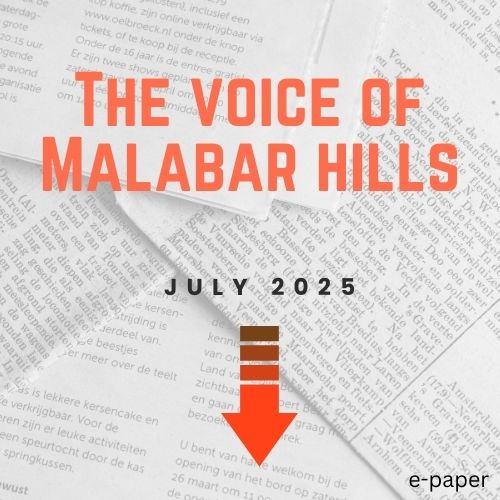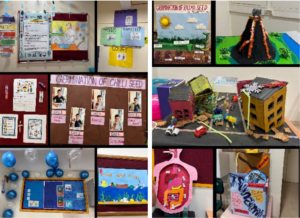Thank God there have been women who saw beyond their own noses and wanted to help where possible. Who spent their time, efforts and energies for the betterment of those not as fortunate as themselves. They deserve our salute.
Ramabai Ranade (1863 – 1924)
She was a great social reformer and one of the first women’s rights activists in the 19th century.
Born in the Kulekar family of Sangli, she was married at the tender age of 11 years and to a man 21 years her senior. Justice Mahadev Govind Ranade was a distinguished scholar, and at a time when education was denied to women, he personally taught her both Marathi & English. This gave her the power to look around at the plight of other women and establish institutions to assist them. Her aim was to help down-trodden women and prepare them to lead useful lives. To meet this goal she first started the ‘Hindu Ladies Social & Literary Club’in Mumbai and opened the famous girls school in Pune, ‘Hujurpaga’. Her life as a widow for 24 years was devoted to social awakening and redressal of grievances of distressed women. In Pune she established the ‘Seva Sadan Society’ in her personal house, and was then invited for assistance & guidance for starting a similar institution at Gamdevi in Mumbai. The Seva Sadan in Mumbai offered education for children and hostel facilities for medical students and nursing probationers. It also developed a Women’s Training College.
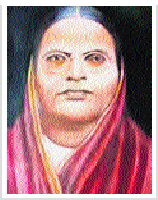
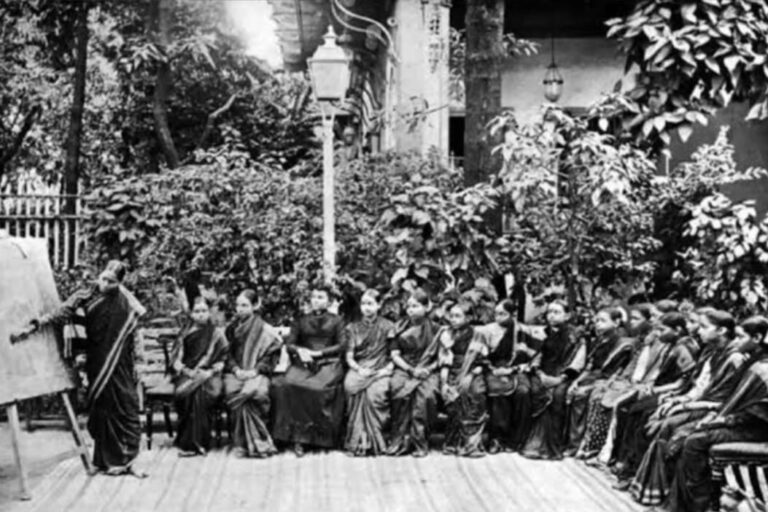
She worked relentlessly against child marriage and the practice of Sati. Her last two outstanding contributions were – the organisation for agitation for compulsory pre-primary education for girls, and the ‘Women’s Suffrage Movement’. On her demise in 1924, Mahatma Gandhi paid the tribute as ‘the death of Ramabai Ranade is a great national loss. She was the embodiment of all that a Hindu woman could be. She was a true friend and helpmate of her illustrious husband in his lifetime.’ In her honour a postage stamp was issued in 1962, her birth centenary year for her great contribution towards Indian society, and Zee Marathi televised a serial named ‘Unchamaazazoka’ (dream big and strive for it) in March 2012.

Fathema Ismail (1903-1987)
She was the sister of the flamboyant mill owner, Umar Sobhani, who was an ardent Congress Party activist. Due to his close proximity to nationalist leaders, she too was drawn to issues of social emancipation. In 1936 she served as the Secretary of the Simla branch of the All India Women’s Conference. Her marital home was a flat off Nepean Sea Road, and this became was a meeting ground for party members. It is rumoured that she hid Jayaprakash Narayan under her bed, to avoid his arrest. She was actively involved in women’s education and was a founder member of All India Village Industries Association.

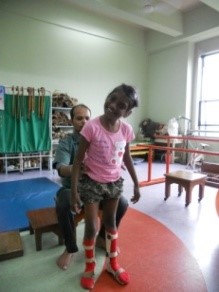
Her life, however, took a different turn when her young daughter was diagnosed with poliomyleties, a most dreaded and crippling disease. She was shocked as a mother, and travelled throughout the country for the best possible medical attention. Alas none was to be found! The only assistance she could get was at the Army Rehabilitation Centre in Pune, which took care of injured soldiers. She spent around three years to observe the methods employed.
On returning to Mumbai, she single-handedly networked with the medical community in the city to start a rehabilitation centre. In July 1947 Dr. A. V. Baliga offered his clinic near Nariman Point and 80 patients were immediately registered. Soon the number of patients grew by leaps and bounds, and the space was too small. Thus in September 1947, soon after the country gained independence, the Government recognised her pioneering efforts and granted land on lease to ‘The Society for the Rehabilitation of Crippled Children’at Haji to build India’s first and only ‘Children’s Orthopedic Hospital’. This Hospital became a referral centre for children from all over the country and the neighbouring countries of South East Asia and the Middle East. It was recognised nationally and internationally for the medical, surgical and rehabilitation services offered.
Recognising that these children needed care and different services through their growing years, she created other supportive organisations. ‘Fellowship of the Physically Handicapped’ (FPH) in 1956, to provide training and jobs for those afflicted. ‘The Society for the Education of the Crippled’ (SEC) was established in 1958 to take care of educational needs, and All three non-government organisations continue to provide assistance to children, whose childhoods are most unfortunately diminished by a variety of crippling conditions.


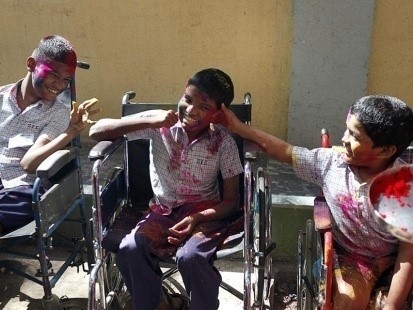
In 1951 Mrs. Ismail represented India at the Second International Poliomyelitis Congress. She presented the methods and experiences in supporting the services required for these children. In 1958 she was awarded the Padma Bhushan and in 1978 was nominated to the Raja Sabha. She served as a respected member of the Rajya Sabha from 1978 to 1984, when seats were not bought, but by invitation for true recognition of service to society.
In her own words – ‘My country is the extension of my own home, and I do for other children what I have so courageously done for my own’.
Lady Dhanwanti Rama Rau (1893 – 1987) & Mrs. Avabai Wadia (1913 –2005)
Lady Dhanwanti Rama Rau was a Kashmiri, born & brought up in Hubli. For higher education she moved to Madras (now Chennai), to join the Presidency College. There she met and married the distinguished economist and diplomat, Sir Benegal Rama Rau. She was a leader in the women’s rights movement.


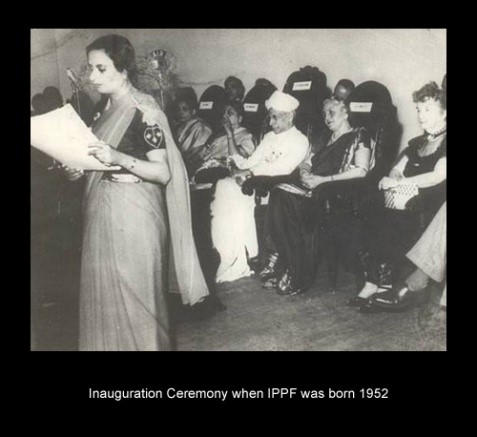
Lady Dhanwanti Rama Rau was a Kashmiri, born & brought up in Hubli. For higher education she moved to Madras (now Chennai), to join the Presidency College. There she met and married the distinguished economist and diplomat, Sir Benegal Rama Rau. She was a leader in the women’s rights movement. When her husband was posted in Mumbai as the 4th Governor of the Reserve Bank of India, she started working for the ‘Association for Moral and Social Hygiene’, and then moved on to establish the ‘Family Planning Association of India’ (FPA) in 1949, becoming its first President. FPA was established to assist with reproductive choices, education about sexually transmitted diseases, and sexual reproductive health.
To pursue these efforts she was joined by Mrs. Avabai Bomanji Wadia as a founder member. Avabai was born in Sri Lanka into an affluent and very westernised Parsi family, originally from Gujerat. After initial schooling in Ceylon, she was sent to England for further studies. Choosing a career in law, she enrolled at the Inns of Court, and became the first Sri Lankan woman to become a barrister. After the family moved & settled in Mumbai, she married Bomanji Khurshedji Wadia in 1946. Her marital home was on Malabar Hill, adjoining the Hanging Gardens. In Mumbai she made no attempt to practise law, but joined the All India Women’s Conference and took social activism in the form of feminism. She joined FPA in 1949 and devoted herself as its President for 34 long years. At the 3rd International Conference on Planned Parenthood held in India in 1952, the eight associations working in this field, unanimously voted to form the International Planned Parenthood Federation (IPPF). Avabai was later elected as its President, a post she held for two terms from 1983 to 1989. During this time the IPPF was awarded the UN Population Award in 1985 and the Third World Prize in 1987. Avabai’s efforts persuaded the Government of India to include ‘contraception’ in the first 5 year plan for the country, and it remained as a focus area for many years. On the 60th anniversary of FPA, it was possible to open a new Avabai Wadia Health Centre in the city from funds willed by her. It provides medical services and training for health providers.
Today the FPA is the largest non-governmental organisation in India with –
- vision to envision sexual & reproductive health (SRH) as a human right
- mission to strengthen voluntary commitment for Rights & Choices.
The efforts of the two ladies of Malabar Hills illshIhHiwere recognised by the Government of India. Lady Dhanwanti Rama Rau was awarded the Padma Bhushan in 1959, and Mrs. Avabai Wadia the Padma Shri in 1971.
Pupul Jayakar (1915 – 1997)
Pupul Jayakar was born in Etawah in Uttar Pradesh. Her father, Mehta was a Gujerati senior officer in the Indian Civil Service. He was posted in various parts of the country, which gave Pupul the opportunity to learn about local crafts and traditions. Her early education was in Banaras (Varanasi) in a school started by Dr. Annie Besant. Later in Allahabad brought her into contact with Indira Gandhi and the Motilal Nehru family. They remained friends throughout her life. She graduated from the London School of Economics and on returning to India married Manmohan Jayakar, a barrister and settled near Lands End on Malabar Hill.
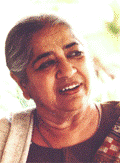
In Mumbai she started ‘Toy Cart’, an English language children’s magazine illustrated by noted painters Jamini Roy and M. F. Hussein. In 1940 she became politically involved as secretary to the Indian National Congress activist Mrinalini
Sarabhai in the Kasturba Trust. She was also appointed assistant secretary of the women’s affairs in the National Planning Committee. Later she befriended J. Krishnamurti and became involved in the handloom industry. She chaired the All
India Handicrafts Board and established the Weavers’ Service Centre. Pupul was recognised as an Indian cultural activist and writer on revival of traditional village arts, handlooms and handicrafts. She organised a series of arts festivals in the 1980s in England, France, USA and Japan. In 1956 she founded the National Crafts Museum and then the Indian National Trust for Art and Cultural Heritage (INTACH) in 1984. She was awarded the Padma Bhushan in 1967.
Anita Garware, Chairperson, INDIAN HERITAGE SOCIETY –MUMBAI & Resident of Malabar Hill

